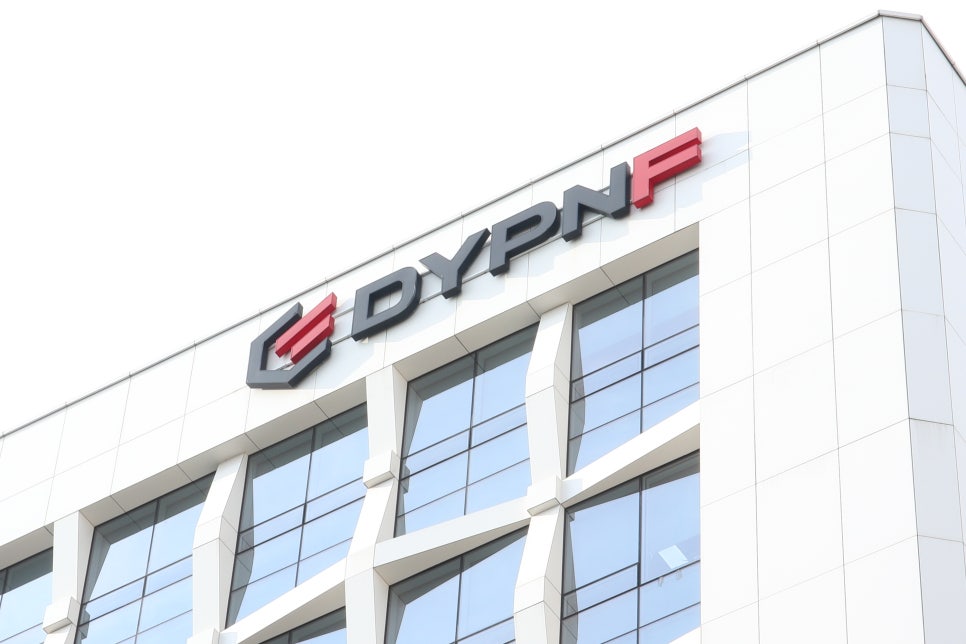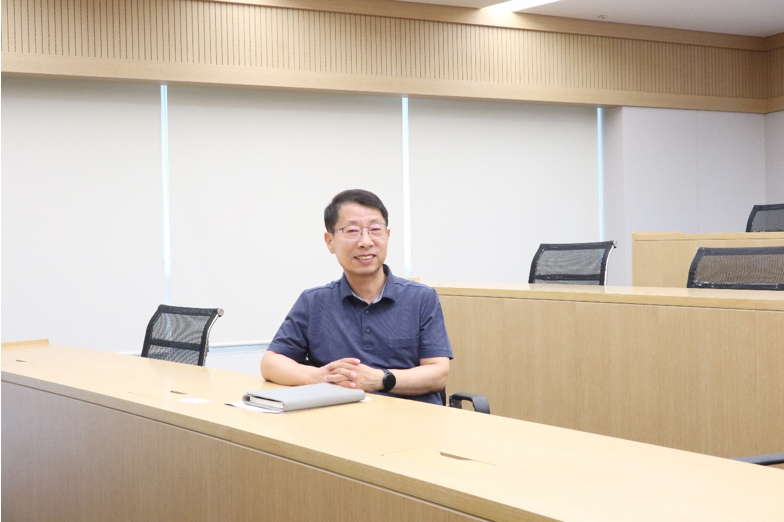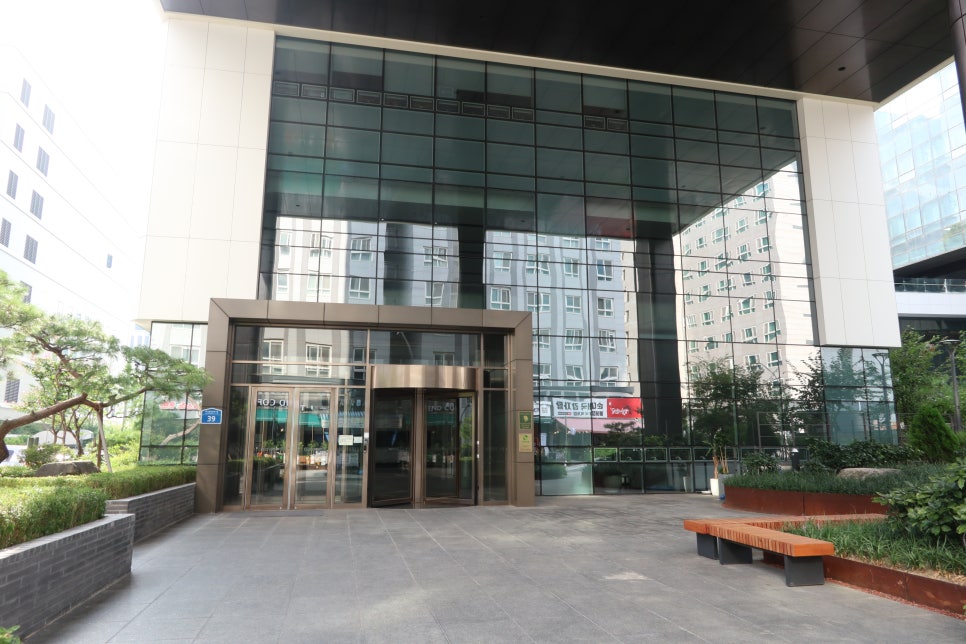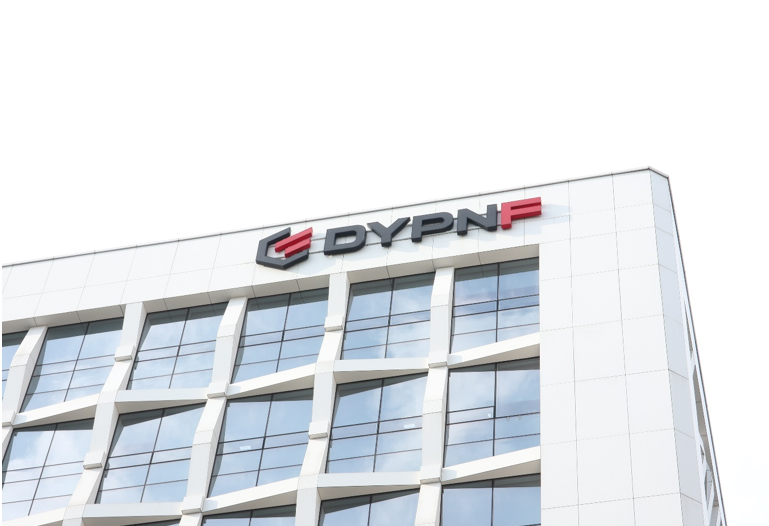| 분야 | 분체이송 전문 업체, DYPNF | ||
|---|---|---|---|
| 한줄입력 | "290명의 문서 조회 및 활용은 누적 90만건 이상. 지금은 기업 필수 인프라가 되었습니다." | ||
| 영문썸네일 | |||
산업 설비 분야의 선두주자인 DYPNF의 전산 시스템을 책임지고 있는 장형진 경영리더님과의 인터뷰를 통해, DYPNF가 왜 이 시스템을 도입하게 되었는지, 그리고 실제 사용하면서 어떤 성과를 거두고 있는지 자세히 알아보았습니다.
기존에 사용하던 NAS 방식의 폴더 접근 권한 관리에 한계를 느끼고, 본사 및 자회사의 문서 통합 관리 필요성을 절감하여 Destiny ECM을 도입했다고 설명하셨습니다.
Destiny ECM을 통해 문서 유출, 보안 위협을 철저히 관리할 수 있게 되었으며, 문서 공유를 통한 협업도 한층 강화되었습니다.
기업 인프라를 개선하는 꿀팁도 아낌없이 전수해 주셨는데요. 함께 알아보실까요?
✔ DYPNF의 고민
폴더 접근 권한 부여 등 관리 한계(NAS관리)
본사 및 자회사의 문서 통합관리 및 업무환경 통합 필요
자료 유출 방지 및 랜섬웨어 차단 등 내/외부 위협 보호
문서공유를 통한 협업 강화
✔ Destiny ECM 도입 성과
파일별 접근 권한 관리로 안전한 내부 문서 관리
본사와 자회사의 모든 문서를 통합 관리하여 업무 환경 일원화, 2,320만 건의 문서 통합 관리
보안 드라이브와 로컬 디스크 통제 기능을 통해 자료 유출과 외부 위협 효과적 차단
월 평균 39,000건의 문서 조회 및 활용

DYPNF 문서중앙화 구축 스토리
1. 문서중앙화 솔루션이 필요하다고 느끼게 된 계기가 있나요?
시스템 도입을 처음 고려하게 된 시점은 2021년 6월, 제가 DYPNF에 입사하면서부터였습니다. 사실, 입사 전부터 회사 내에서는 전산 시스템의 전반적인 개선과 업그레이드에 대한 필요성이 제기되고 있었고, 그중에서도 문서중앙화 시스템 도입이 가장 우선순위에 있었습니다.
경영진들은 문서중앙화의 중요성을 이미 잘 이해하고 계셨습니다. 보안 강화, 협업 효율성 증대, 그리고 문서 사용 환경의 통합 등 다양한 이유로 이를 도입해야 한다고 생각하고 계셨죠. 제가 입사하고 나서, NAS를 이용한 파일 서버 관리 방식의 한계를 금방 느꼈습니다. 파일 서버에서는 프로젝트별로 폴더가 만들어지긴 했지만, 폴더 접근 권한 관리나 사용자 등록, 삭제 등의 작업이 매뉴얼로 이루어지고 있었고, 이를 관리하는 담당자가 단 한 명뿐이었습니다.
이러한 환경에서는 효율적인 문서 관리가 어렵고, 자료 유출이나 랜섬웨어 같은 외부 위협에 대한 보호도 미흡할 수밖에 없었죠. 그래서 저는 문서중앙화 시스템의 도입 필요성을 강하게 느꼈고, 경영진의 요구와도 일치하는 점이 많았기에 바로 프로젝트에 착수할 수 있었습니다. 본사와 자회사의 문서 통합 관리, 랜섬웨어와 같은 위협으로부터의 보호, 그리고 협업 강화를 위한 문서 공유 시스템 구축이 그 핵심이었습니다.
마침, 사이버다임이라는 신뢰할 수 있는 파트너를 잘 알고 있었기 때문에, 시스템 선정과 도입 과정도 순조롭게 진행될 수 있었습니다. 경영진의 니즈와 시스템의 기능이 잘 맞아떨어지면서, DYPNF의 정보 자산 보호와 업무 효율성 강화라는 목표를 달성할 수 있었습니다.

2. 사이버다임의 문서중앙화 솔루션을 선택하신 이유가 궁금합니다.
사이버다임의 문서중앙화 솔루션, Destiny ECM을 선택하게 된 이유는 명확했습니다. 가장 큰 이유는 시스템의 안정성과 기능성이었습니다. 저는 이전에 이 시스템을 접해본 경험이 있어, 도입과 구축이 원활할 것이라 확신했죠.
사이버다임은 오랜 역사와 전통을 가진 회사로, 특히 문서중앙화 시스템에 있어서는 깊이 있는 전문성을 자랑하는 회사였죠. 단순히 유행을 따라 이것저것 하는 회사가 아니라, 문서중앙화라는 한 분야에 집중해온 전문가들이 만든 시스템이기 때문에 그만큼 신뢰가 갔습니다. 그 전문성과 신뢰성을 바탕으로 국산 소프트웨어 중에서 단연 돋보였습니다.
특히, Destiny ECM은 단순한 문서 관리 시스템이 아니라 개인 저장 공간 통제 기능까지 포함한 통합 솔루션이었습니다. 이전 회사에서는 ‘마이가드’ 같은 별도의 솔루션을 사용했지만, Destiny ECM은 이 모든 기능을 하나로 합친 시스템이라 더욱 매력적이었어요.
물론 기능뿐만 아니라 브랜드와 비용 효율성도 중요한 요소였습니다. 외산 솔루션을 배제하고 국내 최고의 솔루션을 찾는 과정에서, 사이버다임은 그만큼의 가치를 제공한다고 판단했어요.
1.기능 2. 가격 3. 브랜드 세 가지 중 선택에 크게 영향을 끼친 부분이 있다면 어떤 게 있을까요?
기능적인 부분이 가장 1순위였고, 2순위는 브랜드였던 것 같아요. 사이버다임 제품은 외산 솔루션을 제외하고 국내에서는 1위라고 생각했고, 비용적인 측면에서도 다른 회사들에 비해 많이 비싸다거나 하지는 않았습니다. 차이가 나는 부분은 그만큼 값어치가 있다고 생각했죠.
3. 문서중앙화 솔루션 구축 당시 어려운 점은 없으셨나요?
문서중앙화 솔루션을 구축하는 과정에서 여러 가지 어려움과 도전 과제가 있었습니다. 새로운 산업과 업종에 적응하는 과정에서, 프로젝트를 주도하기보다는 현업의 의견을 많이 반영해야 했습니다. 특히, 문서 분류 체계 구성, 프로젝트 관리 방식, 넘버링 규칙, 그리고 폴더 구조의 깊이 설정에 대해 많은 고민이 필요했습니다. 또한, 본사와 자회사를 포함한 통합 관리 모델을 어떻게 수립할지 역시 큰 과제였습니다.
그럼에도 불구하고, 현재 시스템을 잘 구축하고 원활하게 운영되고 있다는 점에서 큰 자부심을 느끼고 있습니다. 체계적으로 분류를 구성하고 실무 활용도를 높이기 위해 많은 고민을 했던 만큼, 그 결과는 매우 만족스럽습니다. 다만, 사용자 폴더를 통해 조직과 상관없이 자료를 관리하고, 프로젝트 폴더와 링크되는 구조를 추가했으면 더 좋았을 것 같다는 아쉬움은 남아 있습니다.

DYPNF의 특별한 사용기를 소개합니다!
1. DYPNF의 시스템 활용 현황에 대해 설명해주세요.
현재 DYPNF의 문서중앙화 시스템은 매우 활발하게 활용되고 있습니다. 시스템은 2022년 4월에 오픈되었으며, 2024년 7월 말 기준으로 약 2,320만 건의 문서가 등록되어 있습니다. 문서 조회 및 활용 부분에서도 눈에 띄는 성과가 있는데, 누적 90만 건 이상이 조회 및 참조되었으며, 최근 5개월 동안 월평균 39,000건의 문서가 조회되고 있습니다.
저장 용량 측면에서는, 초기 파일 서버 이관 시 약 1700만 건의 문서를 이관하여 20테라바이트 내외의 데이터를 처리했는데, 현재는 56테라바이트로, 이관 당시보다 약 3배 가까이 증가한 상태입니다.
최근에는 서버와 스토리지의 안정성을 더욱 강화하기 위해 스토리지 이중화 구축을 완료했습니다. 이 과정에서 사이버다임과 MCCS 업체와 사이버다임 기술지원팀의 적극적인 지원에 감사하고 있습니다. 서버 작업의 특성상 주말이나 휴일에 작업해야 하는 경우가 많았는데, 그때마다 빠르게 대응해주셔서 큰 도움이 되었습니다. 또한, 본부장님과 영업팀에서도 적극적으로 지원해주셔서 시스템 운영이 원활하게 이루어지고 있습니다.
2. 업무에서 자주 사용하거나 유용한 기능은 무엇인가요?
자주 사용하는 기능 중 하나는 윈도우 탐색기입니다. 기존과 동일한 윈도우탐색기 환경이기 때문에 문서의 등록과 편집이 자유롭습니다. URL 공유 기능도 자주 사용합니다. 문서를 링크 형태로 공유할 수 있어, 회사 내/외부 배포에 안전하게 사용되며, 팀 내에서 문서를 간편하게 접근하고 협업할 수 있는 점이 매우 유용합니다. 보안 드라이브 기능도 자주 활용되는데, 특히 로컬 디스크 통제 기능을 통해 지정된 프로그램만 사용할 수 있도록 설정하는 것이 중요한 역할을 하고 있습니다. 이를 통해 문서 보안과 데이터 관리가 훨씬 강화되었습니다.
(1) 윈도우탐색기
사이버다임 문서중앙화 솔루션은 사용자에게 익숙한 윈도우탐색기와 동일한 환경을 제공합니다. 이러한 일관된 사용자 인터페이스 덕분에 별도의 학습이나 적응 과정 없이 바로 사용이 가능하며, 기존의 윈도우탐색기 사용 경험을 그대로 이어갈 수 있습니다.
(2) URL 공유 기능으로 간편한 문서 접근 및 협업
URL 공유 기능을 통해 팀원들이 특정 문서에 쉽게 접근할 수 있습니다. 링크 형태로 문서를 공유함으로써 협업이 더욱 원활해지고, 불필요한 파일 전송 과정을 줄일 수 있습니다.
(3) 보안 드라이브로 문서 보안 강화
보안 드라이브 기능을 통해 중요 문서를 안전하게 보호할 수 있습니다. 로컬 디스크 통제를 통해 지정된 프로그램만 사용 가능하게 설정함으로써, 민감한 자료의 무단 복제나 유출을 효과적으로 방지합니다.
(4) 로컬 디스크 통제로 어플리케이션 사용 제한
로컬 디스크 통제 기능을 통해 사용자가 특정 어플리케이션만 사용할 수 있도록 설정할 수 있습니다. 이를 통해 회사에서 승인된 프로그램 외의 사용을 차단하고, 정보 보안을 강화할 수 있습니다.
(5) 다양한 프로그램과의 호환성
주로 사용하는 프로그램은 MS 오피스, 한글, PDF 파일 뷰어, 이미지 편집 툴, 오토캐드,인벤터 등입니다. 시스템이 다양한 프로그램과 호환되어, 업무에 필요한 모든 툴을 안정적으로 사용할 수 있습니다.
업무에서 많이 생성되는 파일 유형은 어떤게 있을까요?
자주 사용하는 프로그램으로는 기본적으로 MS 오피스와 한글, PDF 파일 뷰어가 많이 사용됩니다. 또한, 이미지 편집 툴, 오토캐드 및 인벤터와 같은 2D/3D CAD 프로그램도 많이 활용됩니다.

3. 문서중앙화 솔루션 도입 후, 업무에서 가장 달라진 점이 있다면 무엇일까요?
문서중앙화 솔루션 도입 후 가장 큰 변화는 회사의 모든 정보 자산이 문서중앙화 시스템에 통합되어 있다는 인식이 확고해졌다는 점입니다. 이제 직원들은 문서중앙화 시스템을 회사에서 가장 중요한 시스템으로 인식하고 있으며, 실제로도 290명의 유저 중 일일 상시 접속자가 평균 170명에 이를 정도로 활발하게 사용되고 있습니다. 명실 상부한 가장 중요한 시스템이 되었죠.
사용자들이 문서중앙화 솔루션 도입 후 적응하는 데는 약 3~4개월이 걸렸습니다. 이 시기부터 문서 등록이 급격히 증가했는데, 사전 계획과 미리 잘 준비한 덕분이라고 생각합니다. TF팀을 구성하고 파일 서버 이관 작업을 철저하게 준비한 덕분에 큰 문제 없이 전환이 이루어졌습니다. 특히, 사전 사이버다임과 컨설팅 형태로 말씀을 많이 나눴던 게 도움이 됐던 것 같아요.
사용자 안내 같은 경우, 어떻게 진행 하셨나요?
사이버다임과 협의하여 여러 매뉴얼 중 필요한 부분들을 추려서 DYPNF만의 회사 전용 사용자 매뉴얼을 새로 제작했습니다. 이를 바탕으로 직원들에게 교육을 실시하고, 매뉴얼 배포도 하고요. 각 사업부와 사업팀 관리자들에게 집중적으로 알려 현장에서 원활하게 시스템이 전파될 수 있도록 했습니다. 이렇게 체계적인 다양한 방법이 사용자들이 빠르게 적응하고 시스템을 활용하는 데 큰 도움이 되었습니다.
4. 도입을 고려하는 다른 기업에게 조언하고 싶은 점은 있다면 어떤 게 있을까요?
문서중앙화 솔루션 도입을 고려하고 있는 기업이라면, 먼저 충분히 고민을 해보셔야 해요. 그러니까, 우리 회사의 환경을 제대로 이해해야만, 새로 도입되는 시스템이 딱 맞는 옷처럼 잘 맞아떨어질 수 있는 거거든요. 만약 그 환경을 충분히 파악하지 않은 상태에서 단지 시스템의 네임밸류나 평판만 보고 도입을 결정하면, 나중에 문제가 생겼을 때 대응하기가 쉽지 않을 거예요.
저는 문서중앙화 솔루션에 대한 경험이 좀 있고, '이런 게 있었으면 좋았을 텐데' 하는 아쉬움도 있지만, 그래도 알고 선택한 시스템이었기 때문에 구축 과정에서 큰 어려움은 없었다고 생각해요. 만약 조언을 드리자면, 사이버다임 같은 구축 경험과 역사가 깊은 회사를 선택하는 게 좋을 것 같아요. 사이버다임은 말 그대로 오리지널, 원조 같은 회사거든요. 믿을 수 있는 시스템을 도입하는 게 다른 소프트웨어를 검토하는 데 시간을 낭비하지 않게 해주고, 국산 솔루션 중에서는 TOP이기 때문에 비용 대비 효과 부분만 잘 정리하면 도입 후에 후회할 일은 없을 거라고 생각해요.
그리고 조언을 드리자면, 초기 도입 시 시스템 이중화를 꼭 고려하셔야 해요. 안정적인 운영을 위해 중요한 부분이니까요. 또 하나, 스토리지 용량도 신경 써야 하는데, 현재 총 저장량의 3배 이상을 확보하는 게 좋습니다. 여기서 말하는 총 저장량은 개인 PC의 로컬 저장공간과 파일서버 등에서 이관되는 스토리지 총량을 모두 포함한 거예요. 이렇게 준비해두면 용량 문제로 어려움을 겪을 일이 없을 거예요.
"사이버다임은 구축 경험과 역사가 깊은 소위 말해서 이제 오리지널 원조다 원조. 원조라는 그런 회사의 시스템을 신뢰를 갖고 도입을 하는 게 다른 소프트웨어를 검토하는 시간 낭비를 줄일 수 있고 국산 중에서는 TOP이기 때문에 비용 대비 효과 부분만 잘 정리하신다면 도입 후에 후회는 안 하실 것 같아요."
<장형진 경영리더 인터뷰 내용 중>
5. 만족도는 10점 만점에 몇 점일까요?
문서중앙화 시스템에 점수를 매긴다면 10점 만점에 8점을 줄 것 같습니다. 대다수의 사용자들이 만족하며 시스템을 잘 활용하고 있지만, 여전히 소수의 사용자들로부터 불만 사항이 접수되고 있기 때문입니다. 이러한 불만 사항들은 일반적이지는 않지만, 불편함이 존재함에도 불구하고 아무 말 없이 넘어가는 사용자들도 있을 수 있습니다. 그렇기에 저에게는 더욱 크게 와닿습니다.
최근에도 유지보수팀과 기술지원팀에 이러한 이슈들을 전달했습니다. 메일이나 유선으로 접수된 내용들이 잘 기록되고 있다고 생각하지만, 최근 6개월 이내에 접수된 건들에 대해 관심을 가지고 봐주시면 좋겠다는 생각이 듭니다.

 한국어
한국어







